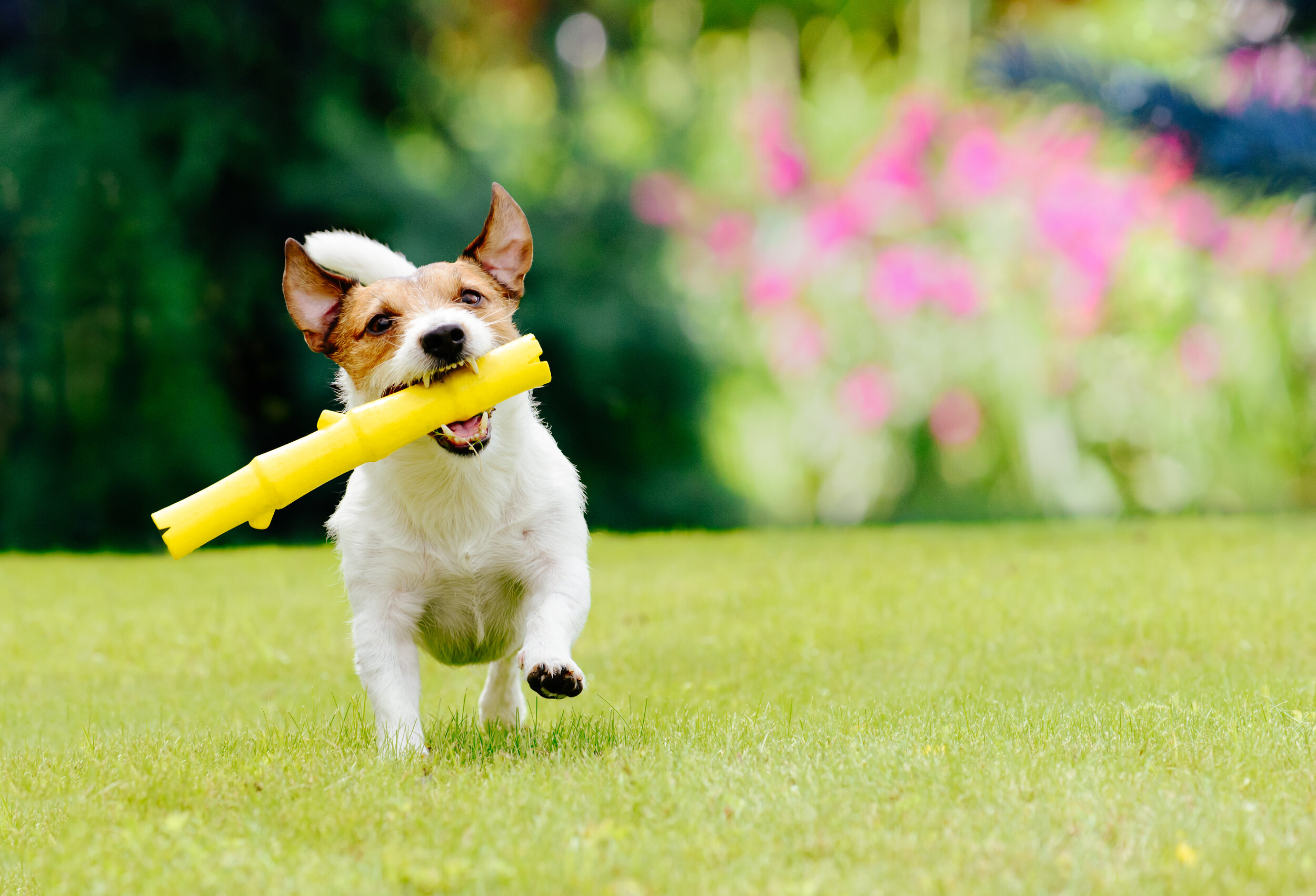How to Create a DIY Pet Run for Your Dog
Dogs need exercise, but the ways that dogs love to burn energy can cause damage to landscaping and irritate the neighbors. A perimeter fence can keep your dog contained in your backyard, it’s not going to stop your dog from digging, or from using your backyard as a toilet. If you have the space, a great solution is to build a dog run. Here’s how to create a DIY pet run for your dog.
A pet run is an area separate from the more desirable landscape elements like the patio, lawn, and plant beds. It lets your pooch exercise freely without damaging your landscaping or taking off to explore the neighborhood.
1. Size and Location
First, determine the size of dog run you need. This will help you decide on the perfect location. Consider how much available space you can devote exclusively to your furry friends. A pet run is a fabulous way to make use of otherwise underused side yards.
Dogs love to run so give them plenty of room to sprint back and forth. Again, work with what you have but make sure the dog run is at least 3’ wide and 10’ long (30 square feet). Larger dogs will need more space, although large breed dogs tend to be less active. Tiny dogs need less space, although some are extreme athletes who need room to zoom. Know your dog’s needs and plan accordingly.
Your pet run needs to be big enough to comfortably house a shelter as well as an area where the dog can do his business without soiling his bedding.
2. Preparation
Mark the layout with stakes and twine, or spray paint. If the area is to remain grass, you can leave the grass alone (although be prepared, most dogs quickly destroy grass). A better option is a concrete slab along with a softer area filled with mulch or sand, or artificial turf.
Mark the location of the fence, fence posts, and gate.
Before you dig, contact your local utility companies to determine the exact location of underground power, gas, or water lines.
Use a fence post hole digger to dig holes to 12” or 24” deep and twice the diameter of the fence posts.
3. Lay the “Floor”
Whether you’re laying a concrete floor, installing artificial turf or adding mulch or sand, excavate the area to about 4” deep and tamp the soil down to create a base. Frame the area with landscape timber to help contain loose materials (you don’t need to do this for a concrete pad). If you are using only mulch or sand, you can add it now.
Which soft material is better? Sand makes dog waste cleanup much easier, although it won’t smell as nice as cedar mulch or pine shavings. Don’t use mulch if your dog likes to chew on wood: the oils in cedar are not good for dogs. All materials will need to be replaced periodically, like cat litter.
Tip: Avoid pine shavings if you have a long-haired or curly-haired dog. You’ll never get it out!
For the concrete pad, first build a frame into which you’ll pour the concrete. Follow the manufacturer’s instructions for mixing the concrete, and once it’s poured into the fill area, spread it thoroughly into the corners for a crisp edge. Fill the area until the concrete is barely peeking above the sides of the form. Use a board as a “float” to even out the top of the slab. Continue until the surface even with the sides of the form and flat. Let the concrete set according to the directions.
If you’re installing artificial turf, first fill the excavated area with sand to help the area drain. Then install the artificial turf according to the manufacturer’s instructions, being sure to secure the edges to prevent movement.
4. Build the Fence
Use sturdy fencing that’s high enough that your dog can’t jump over it. Pour 2” of crushed gravel into the post holes, place the posts in the hole, and fill the hole with concrete, holding or securing the post until it remains upright on its own. Let the concrete set before connecting the gate and fencing. Attach your fencing and gate, making sure there is no gap at the bottom of the gate that dogs could squeeze through.
5. Add Shelter
Dogs need shelter from the elements. You could cover a portion of the dog run with a tarp, sloping it for drainage.

